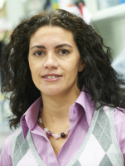Production of clinical-grade plasmid DNA for human Phase I clinical trials and large animal clinical studies Journal Article
| Authors: | Przybylowski, M.; Bartido, S.; Borquez-Ojeda, O.; Sadelain, M.; Riviere, I. |
| Article Title: | Production of clinical-grade plasmid DNA for human Phase I clinical trials and large animal clinical studies |
| Abstract: | The use of plasmid DNA as vaccines for the treatment of cancer and infectious diseases is on the rise. In order to facilitate the manufacture of clinical-grade plasmid DNA for Phase I clinical trials, we developed a process whereby >200 mg plasmid could be produced in a single production run under Good Manufacturing Practices. A dedicated cleanroom (Class 10,000 with Class 100 biosafety cabinet) is utilized for production of the bacterial cell bank, fermentation, harvest/lysis of the biomass, and downstream purification. Fermentation requires three 16-18 h runs (∼12 L each) in shaker-flasks, yielding ∼60 g bacterial paste following batch centrifugation. The biomass is alkaline-lysed, pooled, and the resulting flocculent precipitate is separated by a novel vacuum step, followed by depth-filtration. Downstream processing includes anion-exchange chromatography, utilizing Qiagen silica-based resin, and precipitation with isopropanol. Following precipitation, the DNA is harvested by centrifugation, dried, formulated, and sterile-filtered using a Sartorius Sartobran 150 filter prior to Final-Filling. All processing steps utilize sterilized, single-use components. This process results in a product manufactured according to regulatory guidelines. The plasmid DNA is sterile with ≥95% supercoiled DNA, an A260/A280 ratio ≥1.9, undetectable or extremely low residual endotoxin, RNA, genomic DNA, protein, and antibiotic. Residual solvent levels are negligible. The product yields the predicted profile upon restriction-enzyme digestion, is biologically active upon transfection and remains stable for several years at -20 °C. We have therefore developed a reproducible and cost effective process to manufacture clinical-grade plasmid DNA. This process can be adapted by other academic centers for human or large animal clinical trials. © 2007 Elsevier Ltd. All rights reserved. |
| Keywords: | controlled study; human cell; animals; protein; drug potency; in vitro study; drug screening; rna; dna; genetic transfection; gene therapy; plasmids; vaccine production; centrifugation; vaccines, dna; genomic dna; culture media; chromosome mapping; electrophoresis, polyacrylamide gel; drug industry; indicators and reagents; plasmid dna; dna isolation; fermentation; bacterial cell; restriction mapping; endotoxin; cgmp; clinical-grade plasmid dna; 2 propanol; anion exchange chromatography; biomass; precipitation; cellulose; chromatography, ion exchange; clinical trials, phase i |
| Journal Title: | Vaccine |
| Volume: | 25 |
| Issue: | 27 |
| ISSN: | 0264-410X |
| Publisher: | Elsevier Inc. |
| Date Published: | 2007-06-28 |
| Start Page: | 5013 |
| End Page: | 5024 |
| Language: | English |
| DOI: | 10.1016/j.vaccine.2007.04.077 |
| PUBMED: | 17537555 |
| PROVIDER: | scopus |
| DOI/URL: | |
| Notes: | --- - "Cited By (since 1996): 17" - "Export Date: 17 November 2011" - "CODEN: VACCD" - "Source: Scopus" |
Altmetric
Citation Impact
BMJ Impact Analytics
MSK Authors
Related MSK Work







